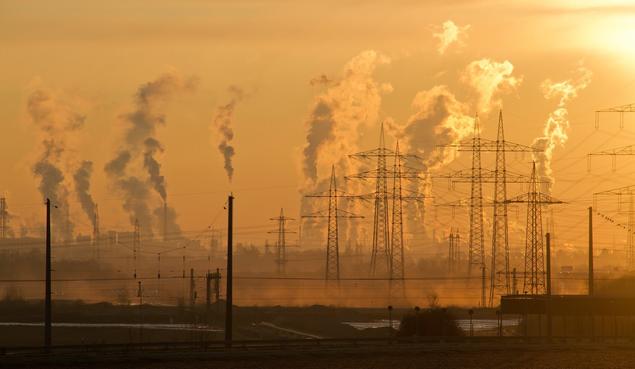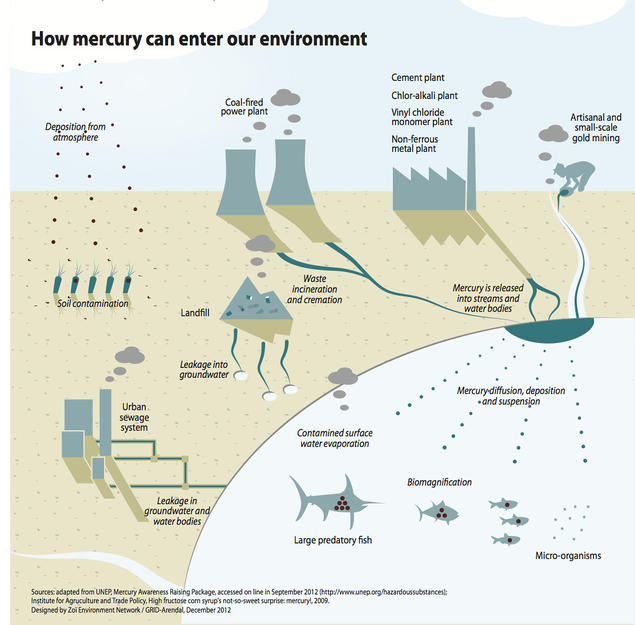China-Norway cooperation on mercury – what can we learn?

FNI researchers have taken a deep dive into the dynamics of global mercury politics. Once again, China is key – both for understanding the problem and for finding possible solutions.
The World Health Organization (WHO) lists mercury as one of the top ten chemicals of major health concern today. After decades of political processes seeking to establish a global treaty, the Minamata Convention on Mercury was finally ratified in 2016. Today, 117 countries have followed suit, and China – one of the first to ratify the convention – stands out as a driving force in international negotiations. But will it be able to deliver on its promises? Where do we stand today, and what lessons can we draw from the Minamata process?
 To find out, the Fridtjof Nansen Institute (FNI) hosted a project seminar on the MERCHINOR project, led by FNI in collaboration with the Norwegian Institute for Water Research (NIVA), Tsinghua University and Peking University, and supported by the Research Council of Norway.
To find out, the Fridtjof Nansen Institute (FNI) hosted a project seminar on the MERCHINOR project, led by FNI in collaboration with the Norwegian Institute for Water Research (NIVA), Tsinghua University and Peking University, and supported by the Research Council of Norway.
Why focus on mercury?
The roundtable, held on 6 February 2020, convened researchers, representatives from the Norwegian environmental authorities, the Ministry of Foreign Affairs, the World Wildlife Fund (WWF) as well as the Research Council of Norway. The focus was on the Minamata negotiations, Chinese implementation and the decade-long bilateral cooperation between Norway and China on mercury policies.
Mercury is extremely harmful, and it spreads easily across borders. Once it is released into the environment, it keeps circulating, year after year’, explained Eirik Hovland Steindal, Research Scientist at NIVA.
He detailed the process of mercury emissions: from its extraction process, supply and trade, to its use, release and storage in water and air. Mercury emissions are stored in the soil for many years after release, causing significant health and environmental problems.
The role of domestic science
 China is the world's largest producer, user and emitter of mercury. However, the past decade has seen a major shift in policy: from almost ignoring the issue ten years ago, China became one of the very first countries to ratify the Minamata Convention in 2016, with ambitious goals for emissions cuts. The shift can partly be ascribed to the strength of the Chinese scientific community on mercury, according to Kristin Rosendal, FNI Research Director on Environment and Biodiversity. Domestic science in China has played a major role in increasing awareness and in building expertise in international negotiations, she argued.
China is the world's largest producer, user and emitter of mercury. However, the past decade has seen a major shift in policy: from almost ignoring the issue ten years ago, China became one of the very first countries to ratify the Minamata Convention in 2016, with ambitious goals for emissions cuts. The shift can partly be ascribed to the strength of the Chinese scientific community on mercury, according to Kristin Rosendal, FNI Research Director on Environment and Biodiversity. Domestic science in China has played a major role in increasing awareness and in building expertise in international negotiations, she argued.
However, the important question of policy implementation remains. Coal-fired power plants are the largest source of mercury pollution globally, and China is expected to target this sector specifically in implementing the Minamata Convention. Here we can note one promising tendency: China’s total atmospheric mercury emissions decreased by 22 per cent between 2013 and 2017, according to one study. However, that was not because of coal-power cuts, but a result of increased Chinese investments in air pollution control devices.
China–Norway partnership
 There are other promising developments as well. In addition to the growing science and capacity-building in China, the ‘timing is right’, argues Gørild Heggelund, FNI Research Professor:
There are other promising developments as well. In addition to the growing science and capacity-building in China, the ‘timing is right’, argues Gørild Heggelund, FNI Research Professor:
'China has seen significant changes over the last decade and has established itself as an important global actor increasingly active in multilateral negotiations,' said Heggelund. 'There are environmental challenges at home, and global environmental agreements resonate well with China’s own policies. Here we can see the synergy between domestic efforts on mercury in China and what is happening globally.'
The FNI-led MERCHINOR project has focused specifically on the bilateral mercury cooperation which has been developing over the past decade. It has produced several positive results, according to Yan Lin, researcher at NIVA. At the seminar, he highlighted improved capacity of mercury management by the Chinese Environmental Authority at both national and local level, as well as the adaptation of a series of policies and technical guidelines targeting products containing mercury. Moreover, the cooperation has helped to build a pool of expertise which has been instrumental in advising China’s environmental policymaking.
More research
FNI currently has several research projects involving a strong focus on, and collaboration with, governmental, industrial and environmental actors in China. You can read more about some of these projects here: https://www.fni.no/chinese-energy-and-environment/
